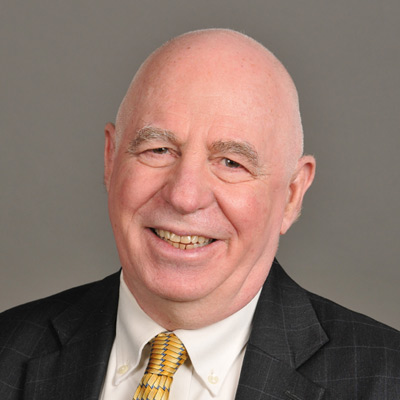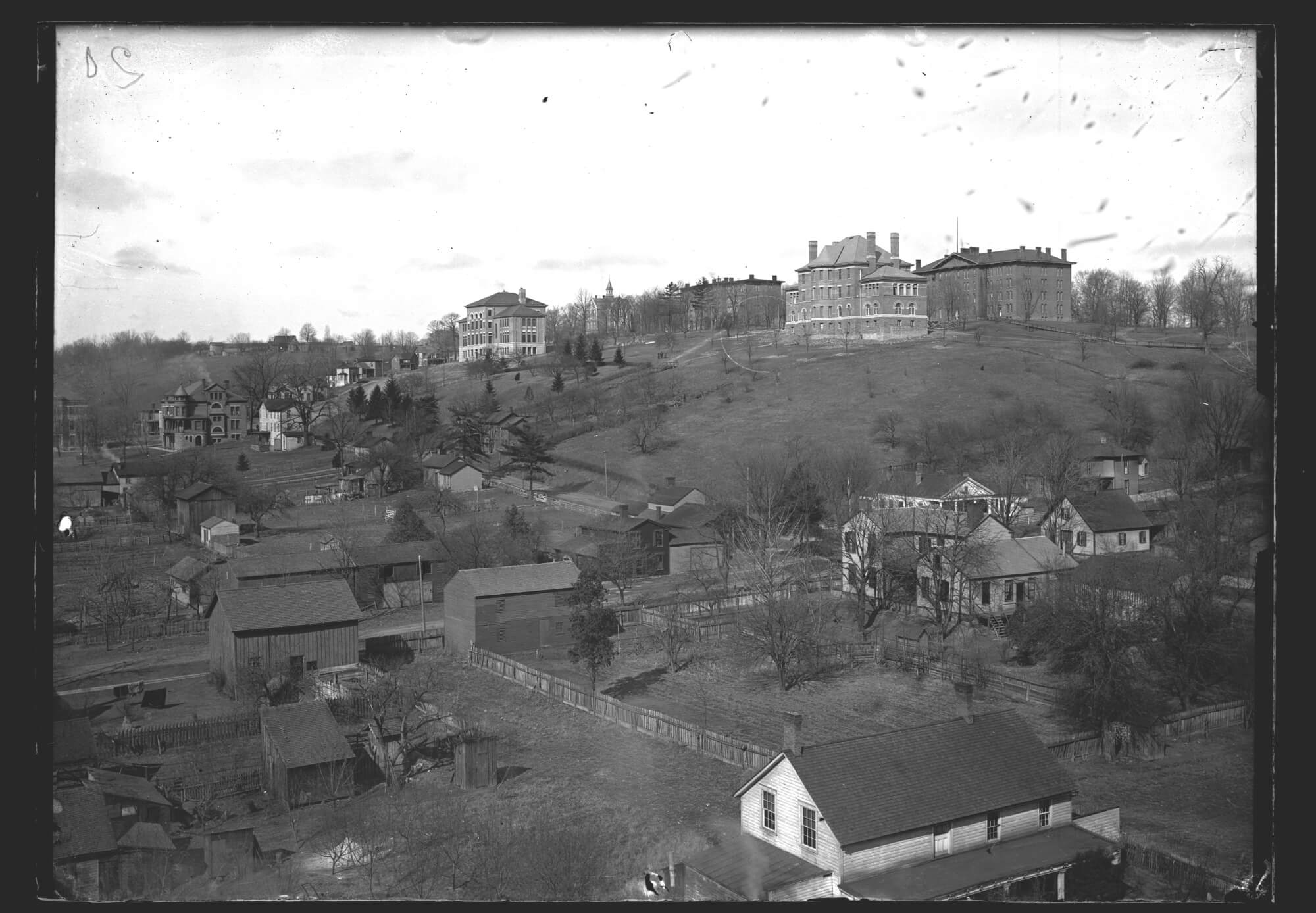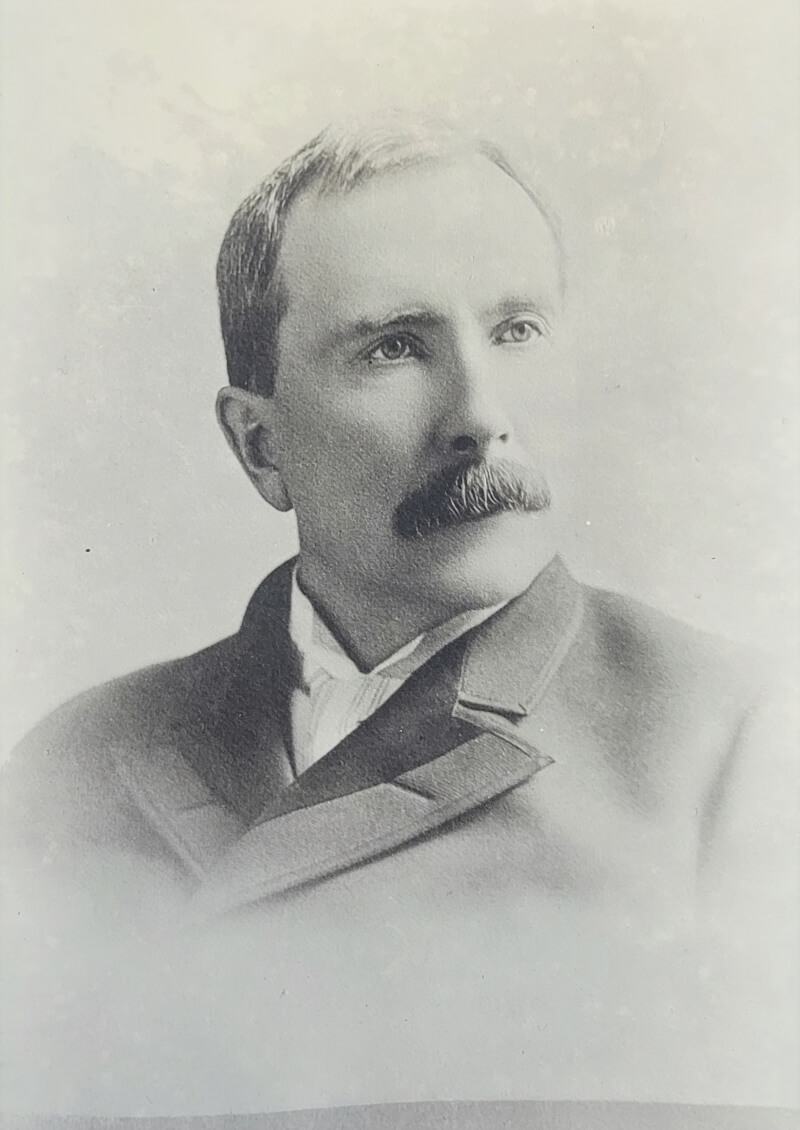When Denison University was founded in 1831 as the Granville Literary and Theological Institution, it became the second Baptist college west of the Allegheny Mountains. In 1853, a Muskingum County farmer promised the college $10,000 to win naming rights. He came through with only $2,000, but the name had already stuck. Deeper pockets could be found in the industrial cities of Dayton, Cincinnati, and Cleveland. The deepest belonged to Cleveland resident John D. Rockefeller. As a staunch Baptist, he was favorably inclined to aid churches and educational institutions affiliated with the denomination. A deep dive into the Rockefeller Center Archives in Sleepy Hollow, New York, the Denison University Archives, and the University of Chicago Library reveals the story of wooing and winning America’s greatest philanthropist.
Denison president Samson Talbot made initial success with Rockefeller in 1868, when Rockefeller was 29. He gave Denison $500, worth more than $10,000 today. His generosity may have been because the grandfather of his wife, Laura Spelman, was among the five who traveled from Granville, Massachusetts, at the beginning of the nineteenth century to establish the village. Two of Laura Spelman’s uncles were early trustees of Denison.
Six years later, Rockefeller’s connection with Denison was firmly established when he became a trustee. He was already a rich man, probably the richest in Ohio, and certainly the richest Ohio Baptist. He was also a devoted benefactor to Baptist causes, but hardly a free-wheeling one. He carefully studied the great number of appeals made to him, required detailed explanations of the need, and set firm conditions before writing a check.
One such appeal came from fellow trustee Henry F. Colby, who wrote to Rockefeller on Feb. 3, 1874: “May I not venture to express the hope that one of the largest gifts of your life will be made at no distant day (to Denison)?” His pitch came as part of a drive to raise $100,000 for the college. Rockefeller came through with $20,000 in two payments, more than twice the total he had given to Denison so far. But he did not make the second payment until he learned that $90,000 had been raised.
He was no doubt influenced by the favorable report he received from George O. King, pastor of the Euclid Avenue Baptist Church, the church to which the Rockefeller family belonged. On March 31, 1880, after a two-week teaching residence at Denison, King wrote to Rockefeller, “I had a good opportunity of judging the work done in the institution and was very much pleased and interested.” Other Baptist colleges vied with Denison for Rockefeller’s largess, among them the University of Chicago. The wife of the president of the University of Chicago, M. E. Anderson, wrote to Rockefeller that the strain her husband was suffering from the serious financial duress of the college could be fatal. “The only way out will be either for some large-hearted man to interfere and straighten things up, or for us all to give up the ship,” she pleaded. Her appeal did not move Rockefeller to contribute.
He did continue to give to Denison. In late 1884, Denison president Alfred Owen wrote for money “for the advanced work in Natural History.” Rockefeller immediately sent $100. In Owen’s thank-you letter, he writes, “I have a faint conception of the pressure put upon you and felt exceeding reluctance to add to your burden.” Soon after, President Anderson at the University of Chicago tried to add considerably to Rockefeller’s burden. In a letter of February 21, 1885, he outlined the financial morass of the institution and pleaded for a donation of half a million dollars. Rockefeller again declined to come to the rescue, and in 1886 the University of Chicago ceased to exist. In what would seem a surprising turn of events, Anderson’s next position was as president of Denison University. He immediately began a drive to raise $100,000 for the Denison endowment. He approached Rockefeller in a letter of May 18, 1887, asserting, “We must enlarge and strengthen the departments of this University in order to make it most largely efficient.” Trustee Colby pushed the sell harder several months later. “Denison is beyond comparison the best established Baptist college west of the Alleghenies,” he boasted in a letter to Rockefeller. “I wish we might have a building at Granville which in years to come might be associated with your memory.” Colby emphasized Rockefeller’s buckeye connection, but Rockefeller, like many other Gilded Age millionaires, had moved four years earlier to New York City, putting himself many more miles from Granville. His attendance at trustee meetings had never been regular, and Colby ended his letter with a gentle chide: “We have regretted that your many engagements have prevented our having the benefit of your counsel in our trustees’ meetings.”
A year later, Anderson was still negotiating with Rockefeller over his contribution, noting in a Jan. 31, 1889, letter: “I don’t just like to see any money go past Granville further westward.” The efforts of Colby and Anderson finally paid off. Rockefeller gave $25,000 toward a pledge of $100,000 (in today’s dollars, $3.5 million), half of the university’s fundraising goal. But the other half was not raised until fully a decade later, in 1900. By then, Anderson was long gone and Daniel B. Purington was Denison’s president. Meanwhile, a forceful movement to resurrect the University of Chicago came from several quarters. From a Jan. 7, 1887, letter from Thomas W. Goodspeed, secretary of the University of Chicago Seminary: “To found this institution, in this place, will, it seems to me, be the glory of a man’s life.” Four days later, from William Rainey Harper, a former Denison faculty member and then Yale professor: “There is no greater work to be done on this continent than the work of establishing a University in or near Chicago.” Two years later, E. Benjamin Andrews went even further, stating to Rockefeller his conviction “that the rearing of a noble institution of learning in that city was [of] the very foremost educational interest of our denomination in this age.”
“To found this institution, in this place, will, it seems to me, be the glory of a man’s life.”
These effusions are even more remarkable when one realizes that Andrews had been president of Denison from 1875 to 1879 and, upon his death in 1917, was interred in the campus cemetery. But such high-flying rhetoric was necessary to break down Rockefeller’s staunch resistance. The onslaught was finally persuasive. On Sept. 26, 1890, Andrews wrote Rockefeller, “I have urged Harper to accept at Chicago and I rejoice as much as you or anyone in the outlook of the new University.” Andrews had by then become president of Brown University and would lead its transformation into a full-fledged university. Harper assumed the position of president at the University of Chicago in 1891 and during the next 15 years would lead the institution to realize the dream of Andrews and others. Rockefeller’s initial gift of $600,000 in 1890 and subsequent gifts totaling $35 million (worth $1.23 billion today) fueled that success.
After his largest donation to Denison, Rockefeller remained a trustee for another two years but had little further involvement and kept his checkbook closed. He resigned in June 1892. While his philanthropy extended to numerous other institutions, Denison was no longer among them.
During the progress of the 20th century, the two institutions divested themselves of their Baptist affiliation and became secular. Denison began graduate programs in the 1880s with the intention of building them into doctoral programs, but soon resolved to stay with a strictly undergraduate curriculum. Today, Denison’s endowment is over a billion dollars, impressive for a college with an enrollment of 2,300. The University of Chicago, with over 17,000 undergraduate and graduate students, boasts an endowment of $10.3 billion. So here are two teasing questions: What if Rockefeller had remained a Denison trustee? What if Denison had lured Harper back as its president? Neither of those possibilities came to pass, and the future of both institutions followed different, though both successful, paths. Such are the vagaries of money.



